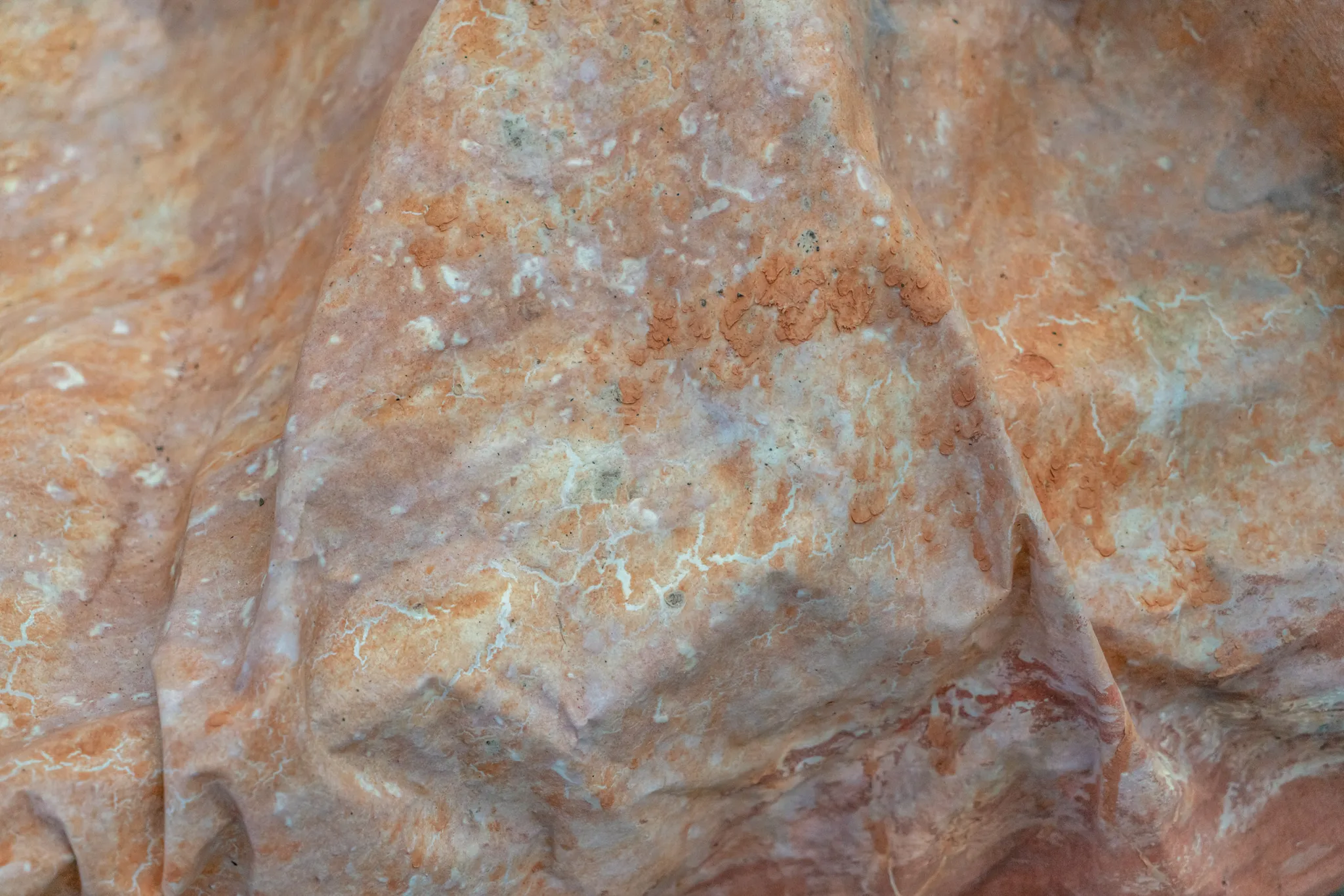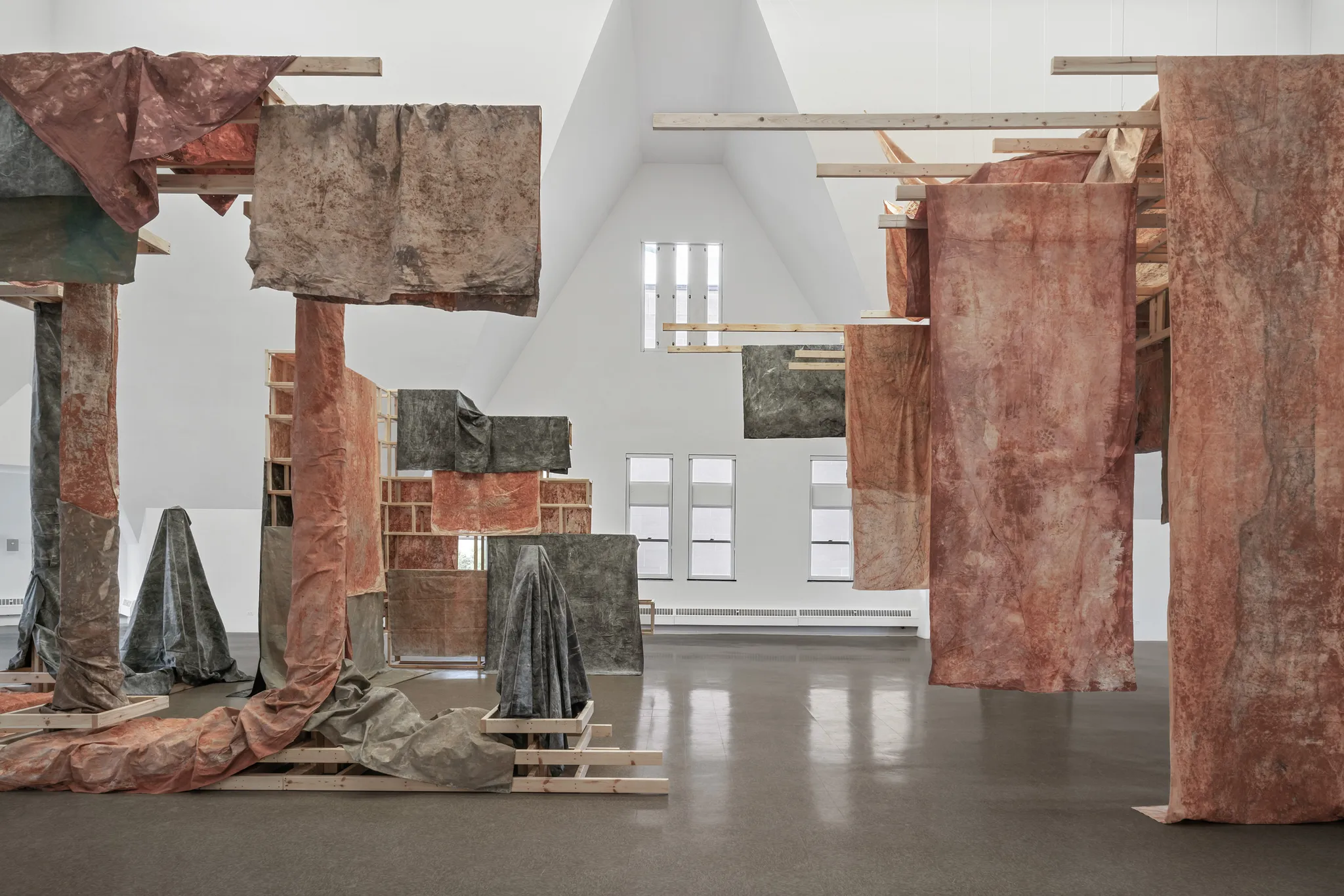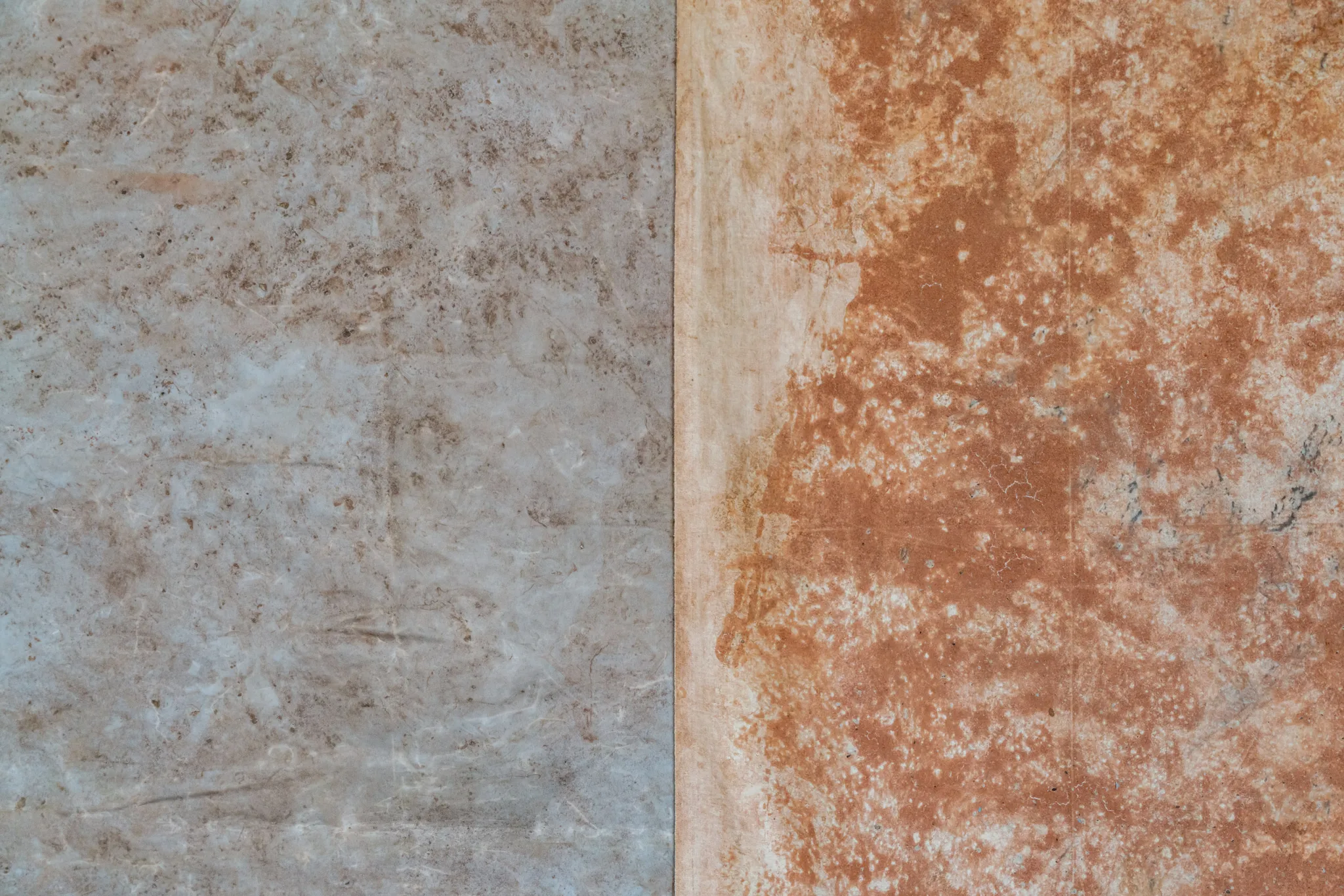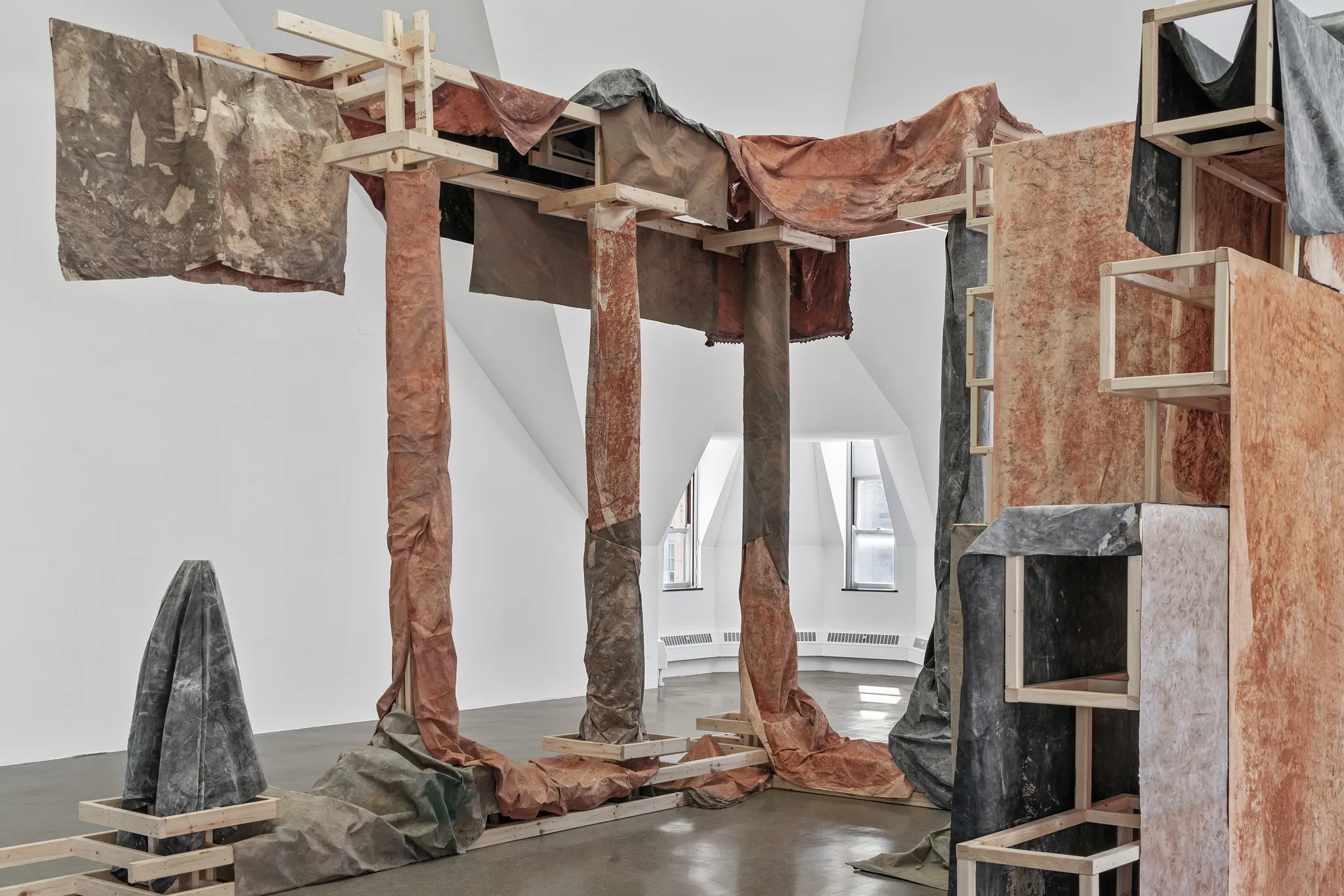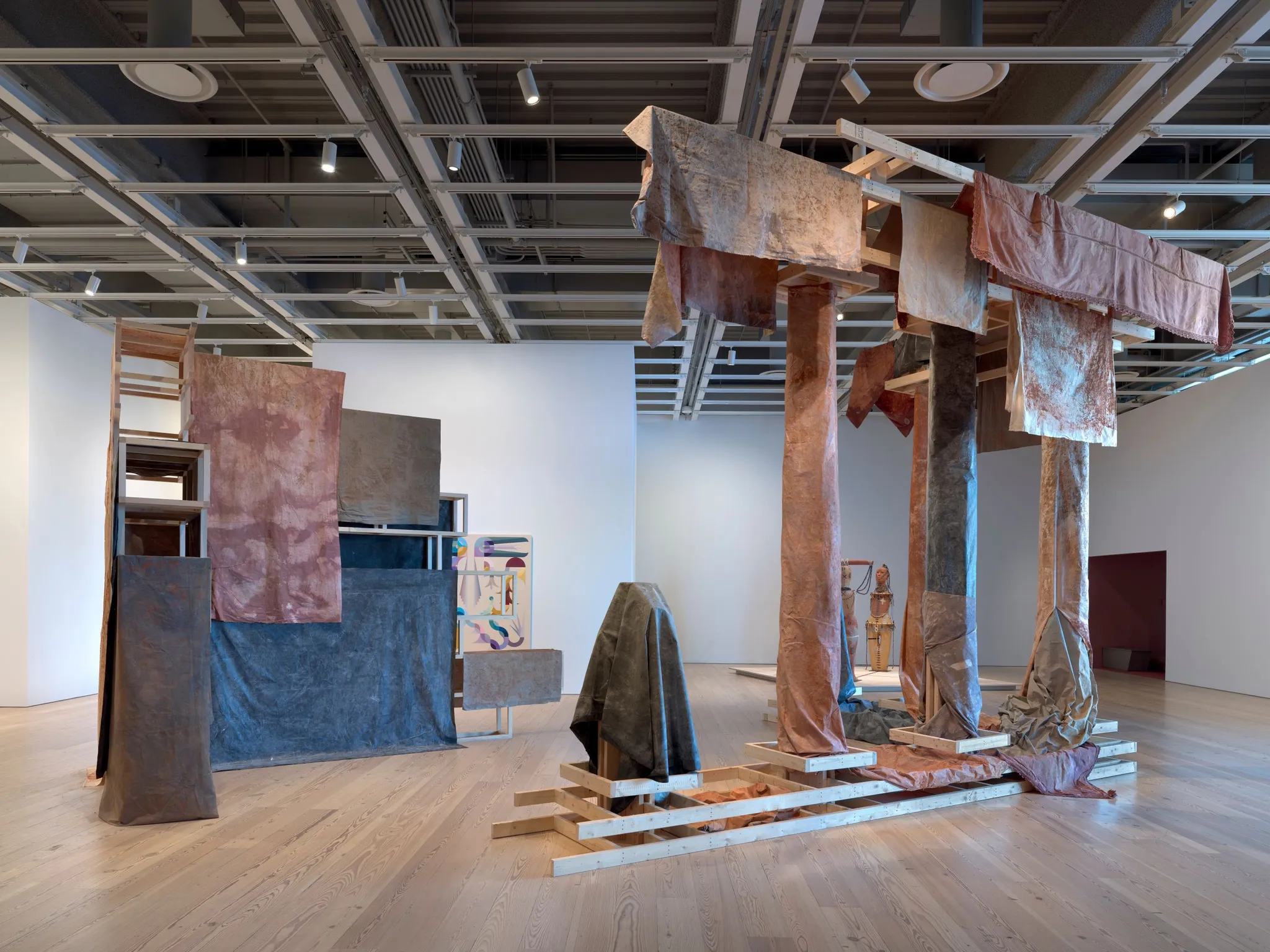Dala Nasser is a Lebanese artist based in Beirut who integrates elements from her country’s landscape, political history, and mythologies into her work. She primarily identifies as a painter, working specifically with this medium and its most elementary materials: fabric, pigments, stretcher bars, and lines. Her practice centres on abstraction and alternative forms of image-making, while also incorporating performative, filmographic, or sound-based elements.
Nasser’s work has been exhibited at the Sharjah Biennial 15 (2023); the 58th Carnegie International (2022); Kunstverein, Cologne (2022); Centre Pompidou, Paris (2021); BetonSalon, Paris (2019); Beirut Art Center, Beirut (2019); and Sursock Museum, Beirut (2017). In 2023, she exhibited Adonis River at the Renaissance Society, Chicago, and in 2024, as part of the Whitney Biennial 2024.
Adonis River (2023)
Charcoal rubbings of Adonis Cave and Temple on fabrics, tablecloths, bedsheets, ash, iron oxide clay from Mount Lebanon, indigo and walnut shell dye, arranged on wooden 2x4 bars
Approx. 13.4 x 5.8 x 4.6 m
According to the myth, Adonis was impaled by a wild boar during a hunting expedition and died in the arms of the Goddess Aphrodite, as she cried for her mortal lover. The tragic event is said to have taken place in modern-day Lebanon, specifically in a cave by the Nahr Ibrahim or Abraham River, also known as the Adonis River. The myth continues to live on to this day, with interfaith pilgrimages of mourning and grief to Adonis being organised at the location. Each spring, reddish mud and melted snow combined flood into the river, serving as a reminder of Adonis’ blood flowing through the landscape.
Adonis River (2023) is an installation comprising large-scale marked fabrics, arranged in a three-dimensional manner relative to the verticality and architecture of the exhibition space, evoking either a temple or the mythical cave. As part of the artwork, a four-channel sound installation of mourning prayers, created in collaboration with artist Mhamad Safa, is being played. The recorded prayers have been slowed down forty times, symbolizing the extended mourning period observed in many cultures.
To create this work, Nasser traveled to the mythical cave where Adonis met his fate. While the scenery of the Adonis River has been depicted in numerous instances throughout art history, often in what can be described as Orientalist paintings, Nasser opts for a more immediate approach to capturing the landscape. She marked the fabric through the physical process of rubbing onto the surfaces of the cave, on-site, directly imprinting the land and its materials onto the canvas. Nasser treats materials as witnesses. By painting the land in direct contact with its location, she abstracts the markings of political and environmental conditions, demonstrating how they are intertwined with the initial myth.
Adonis River is included as part of Whitney Biennial 2024, on view until 11 Aug, 2024.
The work was selected by the Commissioning Committee 2021/23 and acquired through the Hartwig Art Production | Collection Fund. It will subsequently be donated to the Dutch state, becoming an integral part of the national art collection (‘Rijkscollectie’), available for institutions in the Netherlands and abroad.
